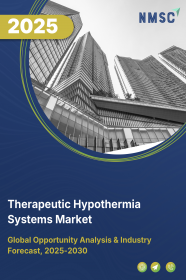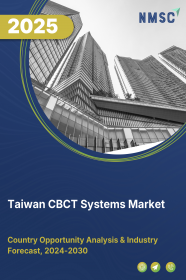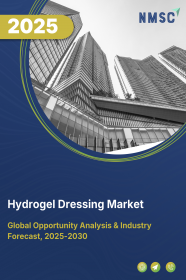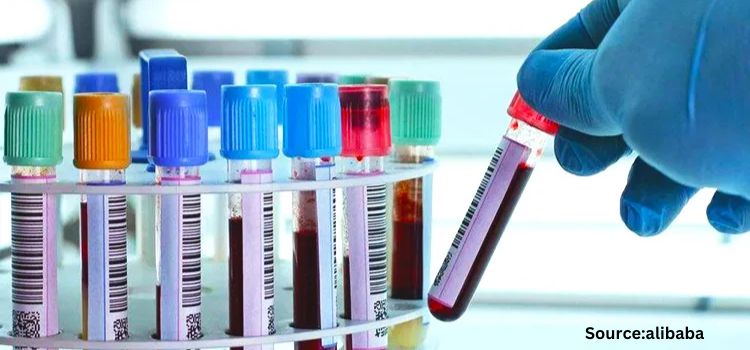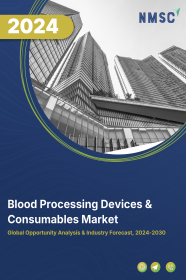
Blood Processing Devices & Consumables Market by Product (Blood Processing Devices and Blood Processing Consumables) by Application (Bleeding Disorders, Trauma & Surgery, Cancer Treatment, Anemia, and Others) and by End User (Hospital, Diagnostic Laboratories, Clinics, and Others) - Global Opportunity Analysis and Industry Forecast 2022 – 2030
US Tariff Impact on Blood Processing Devices & Consumables Market
Trump Tariffs Are Reshaping Global Business
Market Definition
The global Blood Processing Devices & Consumables Market size was valued at USD 44.80 billion in 2021 and is predicted to reach USD 78.5 billion by 2030, with a CAGR of 7.3% from 2022 to 2030. Blood processing devices and consumables are used to measure or examine cells, chemicals, proteins, or other substances in the blood. These devices and consumables are used for detecting blood infections that are commonly caused by the bacteria that enter the bloodstream through the skin, urine, lungs, and gastrointestinal system.
Blood processing devices are also used in diagnosing various diseases such as cancer, cardiac disease, and diabetes. In addition, these are used to separate the components of blood in hospital laboratories and blood centres, which are then administered to patients suffering from various diseases through transfusion.
Market Dynamics and Trends
The increasing number of sepsis cases that can be detected through blood tests further boosting the demand blood processing devices & consumables, as sepsis releases a lot of chemicals into the blood and can damage multiple organ systems. For instance, in August 2020, according to the World Health Organization (WHO), a report on the global epidemiology and burden of sepsis estimated that sepsis occurs in fifty million people each year and is responsible for eleven million deaths around the world.
Also, high incidences of bloodstream infections such as osteomyelitis, urinary tract infections, and pneumonia are expected to support the growth of blood processing devices & consumables. For instance, in a report published by the World Health Organization (WHO) in November 2021, WHO declared that pneumonia caused the death of 740,180 children under the age of 5 and thus accounted for 14% of deaths of children all over the world in 2019.
Moreover, the increasing blood donation camp by various organizations and governments of all countries that use safe procedure for blood collection, testing, processing, and storage drives the market growth. For instance, in a report published by the World Health Organization (WHO) in May 2022, WHO revealed that 118.5 million blood donations were collected globally, out of that 40% of these are collected in high-income countries, the most frequently transfused patient group is over 60 years of age, accounting for up to 76% of all transfusions.
However, high cost of blood processing devices and stringent government policies are expected to restrain the market during the forecast period. On the contrary, the introduction of new devices that includes a DG reader net semi-automated analyser, which is used to facilitate pre-transfusion blood type compatibility testing in blood banks is expected to create ample growth opportunities for the market in the coming years.
Market Segmentations and Scope of the Study
The global blood processing devices & consumables market is segmented on the basis of product, application, end user, and geography. On the basis of product, the market is divided into blood processing devices and blood processing consumables. The blood processing devices is sub-segmented into blood cell processors, blood warmer, blood bank freezers, plasma freezers, blood bank refrigerators, lab refrigerators, lab freezers, ultralow temperatures, shock freezers, grouping analysers, warmers, hematocrit centrifuges, and cell processors and others. Based on blood processing consumables the market is sub-classified into blood bags, blood lancets, vials, blood administration sets, slide stainer, slides, test tube racks, coagulation, grouping & hematology reagents, administration sets, collection tubes, needles, lancets, & filters, and others. On the basis of application, the market is classified into bleeding disorders, trauma & surgery, cancer treatment, anemia, and others. On the basis of end user, the market is bifurcated into hospitals, diagnostic laboratories, clinics, and others. Geographic breakdown and analysis of each of the aforesaid segments include regions such as North America, Europe, Asia-Pacific, and Row.
Geographical Analysis
North America holds the dominant share of the global blood processing devices & consumables market and is expected to boost the market during the forecast period. The high prevalence of blood cancer across the region that increases the demand for blood further drives the market growth. For instance, according to the American Cancer Society in 2022, about 60,650 new cases of leukemia were diagnosed and out of which 24,000 people died due to leukemia in the region.
In addition, presence of the large number of blood banks that provide blood in sophisticated surgical procedures such as cardiovascular surgeries, spinal surgery, and breast cancer surgeries are expected to drive the market growth in the region. For instance, according to the Centres for Disease Control and Prevention (CDC), nearly 20.1 million adults from age 20 were suffering from cardiovascular diseases that further required blood during the surgical procedure in 2020.
On the other hand, Asia Pacific is expected to show a steady rise in the market, owing to growing government initiatives by organising blood camps and educating people about safe blood donations and transfusion procedures. For instance, in April 2022, the Indian government organized a ‘Mega Blood Donation Drive’ in which the Indian community donated a record total of 1327 units of blood to save millions of lives.
Also, high incidence of type I and type II diabetes coupled with the rising risk of hereditary diabetes across the region drives the market growth as diabetic patients adapts frequent blood test to screen their cholesterol levels. For instance, according to International Diabetes Federation (IDF), an estimated 90 million adults aged group under 20-79 years were living with diabetes in the South East Asia (SEA) region in 2021, which represented a regional prevalence of 8.7% of population with diabetes are expected to drive the market growth in this region.
Competitive Landscape
Various market players operating in the global blood processing devices & consumables market include Abbott Laboratories, Hemanext Inc., Terumo Blood and Cell Technologies, Biomerieux SA, Dickinson & Company, Bio-Rad Laboratories, Danaher Corporation, Grifols International, Thermogenesis Corporation, and Roche Holdings. These market players are adopting various strategies such as certification and innovation of business across various regions to maintain their dominance in the blood processing devices & consumables market.
For instance, in April 2021, Hemanext Inc. received a CE Certificate of Conformity for its Hemanext ONE Red Blood Cell (RBC) Processing and storage system which is used for the processing and storage of CPD/PAGGSM Red Blood Cells, Leukocytes Reduced (LRRBC) that have been prepared and processed with the HEMANEXT ONE system within 24-hours of collection.
Moreover, in October 2021, Terumo Blood and Cell Technologies launched new manufacturing plant in Costa Rica which will produce medical devices that collect and separate blood and cells devices. These devices will be used by customers such as blood centres, hospitals, therapeutic apheresis clinics, cell collection & processing organizations, researchers, and private medical practices.
Key Benefits
-
The blood processing devices & consumables market report provides the quantitative analysis of the current market and estimations from 2022 to 2030. This analysis assists in identifying the prevailing market opportunities to capitalize on.
-
The study comprises of a detailed analysis of the blood processing devices & consumables market trends including the current and future trends for depicting the prevalent investment pockets in the market.
-
The information related to key drivers, restraints, and opportunities and their impact on the blood processing devices & consumables market is provided in the report.
-
The competitive analysis of the market players along with their market share in the blood processing devices & consumables market is mentioned.
-
The SWOT analysis and Porter’s Five Forces model are elaborated in the study.
-
The value chain analysis in the market study provides a clear picture of the stakeholders’ roles.
Key Market Segments
By Product
-
Blood Processing Devices
-
Blood Cell Processors
-
Blood Warmer
-
Blood Bank Freezers
-
Plasma Freezers
-
Blood Bank Refrigerators
-
Lab Refrigerators
-
Lab Freezers
-
Ultralow Temperatures
-
Shock Freezers
-
Grouping Analyzers
-
Warmers
-
Hematocrit Centrifuges
-
Cell Processors
-
Other Blood Processing Devices
-
-
Blood Processing Consumables
-
Blood Bags
-
Blood Lancets
-
Vials
-
Blood Administration Sets
-
Slide Stainer
-
Slides
-
Test Tube Racks
-
Coagulation
-
Grouping & Hematology Reagents
-
Administration Sets
-
Collection Tubes
-
Needles
-
Lancet & Filters
-
Others
-
By Application
-
Bleeding Disorders
-
Trauma & Surgery
-
Cancer Treatment
-
Anemia
-
Others
By End User
-
Hospital
-
Diagnostic Laboratories
-
Clinics
-
Others
By Geography
-
North America
-
U.S.
-
Canada
-
Mexico
-
-
Europe
-
U.K.
-
Germany
-
France
-
Italy
-
Spain
-
Russia
-
Sweden
-
Rest of Europe
-
-
Asia-Pacific
-
China
-
India
-
Japan
-
South Korea
-
Australia
-
Indonesia
-
Singapore
-
Rest of Asia-Pacific
-
-
RoW
-
UAE
-
Saudi Arabia
-
South Africa
-
Brazil
-
Israel
-
Turkey
-
Remaining countries
-
Key Players
-
Abbott Laboratories
-
Hemanext Inc.
-
Terumo Blood and Cell Technologies
-
Biomerieux SA
-
Dickinson & Company
-
Bio-Rad Laboratories
-
Danaher Corporation
-
Grifols International
-
Thermogenesis Corporation
-
Roche Holdings
REPORT SCOPE AND SEGMENTATION:
|
Parameters |
Details |
|
Analysis Period |
2021–2030 |
|
Base Year Considered |
2021 |
|
Forecast Period |
2022–2030 |
|
Market Size Estimation |
Billion (USD) |
|
Market Segmentation |
By Product (Blood Processing Devices and Blood Processing Consumables) by Application (Bleeding Disorders, Trauma & Surgery, Cancer Treatment, Anemia, and Others) and by End User (Hospital, Diagnostic Laboratories, Clinics, and Others) |
|
Geographical Segmentation |
North America (U.S., Canada, Mexico) Europe (The U.K., Germany, France, Italy, Spain, Russia, Sweden, Rest of Europe), Asia-Pacific (China, India, Japan, South Korea, Australia, Indonesia, Singapore, Rest of Asia-Pacific), Rest of the World (UAE, Saudi Arabia, South Africa, Brazil, Israel, Turkey, Remaining countries) |
|
Companies Profiled |
Abbott Laboratories, Hemanext Inc., Terumo Blood and Cell Technologies, Biomerieux SA, Dickinson & Company, Bio-Rad Laboratories, Danaher Corporation, Grifols International, Thermogenesis Corporation, and Roche Holdings. |

















 Speak to Our Analyst
Speak to Our Analyst



